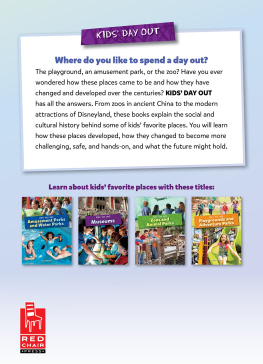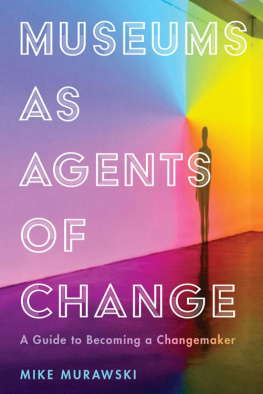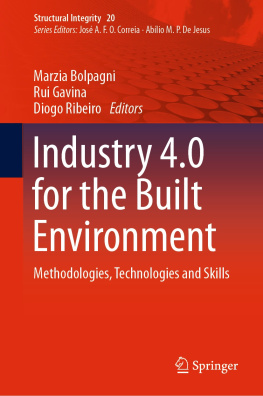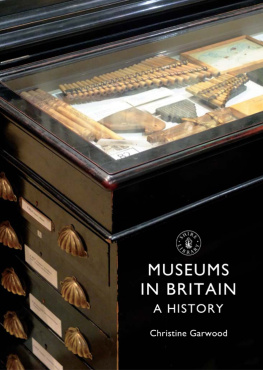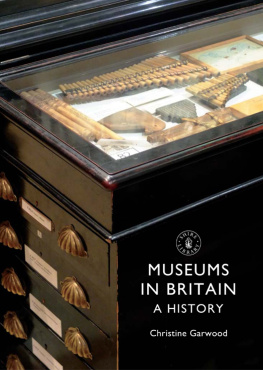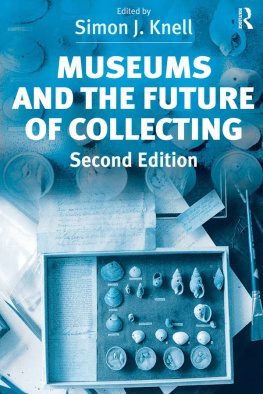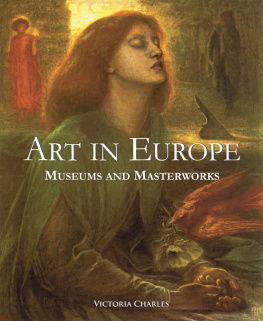
H ERITAGE M ATTERS
MUSEUMS IN CHINA
THE POLITICS OF REPRESENTATION AFTER MAO
Museums in China have undergone tremendous transformations since they first appeared in the country in the late nineteenth century. Futuristic, state-of-the-art museums have today become symbols of Chinas global cultural, economic and technological prominence, and over the last two decades, the number of Chinese museums has increased at an unprecedented rate, with China set to become the country with the highest number of museums in the world. But why have museums become so important?
This book, based on extensive research in a number of the museums themselves, examines recent changes in their display methods, narratives, actors and architectural style. It also considers their representations of Chinese national identity, millenarian history and extraordinary cultural diversity. Through an analysis of the changes affecting not only what we observe through museums, but also the very medium of observation (i.e. museums themselves), this book provides a unique, original and timely exploration of the ongoing changes affecting Chinese society, and an evaluation of their consequences.
Dr Marzia Varutti is a post-doctoral fellow at the Centre for Museum Studies, Department of Culture Studies and Oriental Languages, University of Oslo.
Varutti has done a great service by tackling the enormous topic of museums in China and bringing together a considerable Western secondary literature with her own observations of museums. JOURNAL OF THE ROYAL ANTHROPOLOGICAL INSTITUTE.
H ERITAGE M ATTERS
ISSN 17564832
Series Editors
Peter G. Stone
Peter Davis
Chris Whitehead
Heritage Matters is a series of edited and single-authored volumes which addresses the whole range of issues that confront the cultural heritage sector as we face the global challenges of the twenty-first century. The series follows the ethos of the International Centre for Cultural and Heritage Studies (ICCHS) at Newcastle University, where these issues are seen as part of an integrated whole, including both cultural and natural agendas, and thus encompasses challenges faced by all types of museums, art galleries, heritage sites and the organisations and individuals that work with, and are affected by them.
Previously published titles are listed at the back of this book

Contents
Illustrations
COVER IMAGES
(Top) Cultural relic of the ancient Shu culture, Sanxingdui Museum, Sichuan Province.
Photo: Marzia Varutti
(Middle) Detail of painting representing Chinese ethnic groups.
Photo: Marzia Varutti, taken at the Minzu Museum, Minzu University of China, June 2012. Reproduced with kind permission of Minzu University
(Bottom) Sculpture at the entrance of a Buddhist temple in Jinghong, Yunnan Province.
Photo: Marzia Varutti
FIGURES
Photo: Marzia Varutti. Reproduced with kind permission of the National Museum of China
Photo: Marzia Varutti. Reproduced with kind permission of the National Museum of China
Photo: Marzia Varutti
Photo: Marzia Varutti
Photo: Marzia Varutti
Photo: Marzia Varutti. Reproduced with kind permission of the National Museum of China
Photo: Marzia Varutti
Photo: Marzia Varutti. Reproduced with kind permission of the National Museum of China
Photo: Marzia Varutti
Photo: Marzia Varutti
Photo: Marzia Varutti. Reproduced with kind permission of the National Museum of China
Photo: Marzia Varutti. Reproduced with kind permission of the National Museum of China
Photo: Marzia Varutti. Reproduced with kind permission of the National Museum of China
Photo: Marzia Varutti
Photo: Marzia Varutti. Reproduced with kind permission of the Minzu Museum, Minzu University of China
Photo: Marzia Varutti
Photo: Marzia Varutti
The author and publisher are grateful to all the institutions listed for permission to reproduce the materials in which they hold copyright. Every effort has been made to trace the copyright holders; apologies are offered for any omission, and the publisher will be pleased to add any necessary acknowledgment in subsequent editions.
Acknowledgments
Many people contributed, in various ways, to the completion of this book. Although it is not possible to name them all here, I wish to thank all the museum curators and academics who opened the doors of their museums and offices to an inquisitive stranger, and showed curiosity and interest in museums and museology in Europe. Fieldwork research in China was made possible through the support of the Swiss Commission for Research Partnership with Developing Countries (KFPE), and the Swiss Agency for Development and Cooperation (SDC). I also wish to acknowledge the support of the Swiss National Science Foundation, which enabled me to conduct research at the Museum of Archaeology and Anthropology of the University of Cambridge, UK.
I gratefully acknowledge the following publishers and journals for allowing me to reprint articles and book chapters: Routledge, MuseumsEtc, Linkping University Electronic Press, Museum and Society , Culture Unbound: Journal of Current Cultural Research , Outlines: Critical Practice Studies and The International Journal of the Inclusive Museum .
In China, many people generously set aside time to answer my questions. Among others, I wish to acknowledge the availability and kindness of Professor Song Xiangguang at Peking University; Professor Qian Zonghao at the Shanghai Museum of History/Tongji University; Professor Hua Jian at the Shanghai Academy of Social Sciences; Professor Guo Qingshen at the Shanghai Museum; and Professor Lu Jiansong at Fudan University. I gratefully acknowledge the help of students at the Shanghai Academy of Social Sciences, Fudan University and Yunnan University, who not only helped me with the translation of academic texts but, most importantly, through their friendship offered me some of the most invaluable insights into Chinese culture. I particularly wish to thank Mr Li Yihai and Ms Li Li from the International Programs Office at the Shanghai Academy of Social Sciences (SASS) for facilitating my stay there. My heartfelt thanks go to Professor Yu Jinyiao at the Chinese Academy of Social Sciences, Beijing, for his generosity and friendship, and for providing a home away from home.
I wish to express my gratitude to Dr Helen Loveday at the Collection Baur, Geneva, for her advice, insights and encouragement, especially during the first phases of research. I also wish to thank the curatorial and academic staff at the Museum of Archaeology and Anthropology (MAA) of the University of Cambridge. During my extended research visit there, the MAA provided an ideal framework for my research, offering me invaluable opportunities to gain insights into, and first-hand experience of, museum practice and pioneering collaborative curatorship.
In Cambridge, my reflections were greatly enriched by conversations with friends and colleagues; I especially wish to thank Professor Alan Macfarlane of the Department of Social Anthropology, University of Cambridge, his wife Sarah, and Yan Xiaoxiao for sharing their knowledge of Chinese history and culture with me.
I am sincerely grateful to Professor Peter Davis and Catherine Dauncey of the International Centre for Cultural and Heritage Studies at Newcastle University for their insightful comments on the manuscript draft and for patiently guiding me through the publication process.




